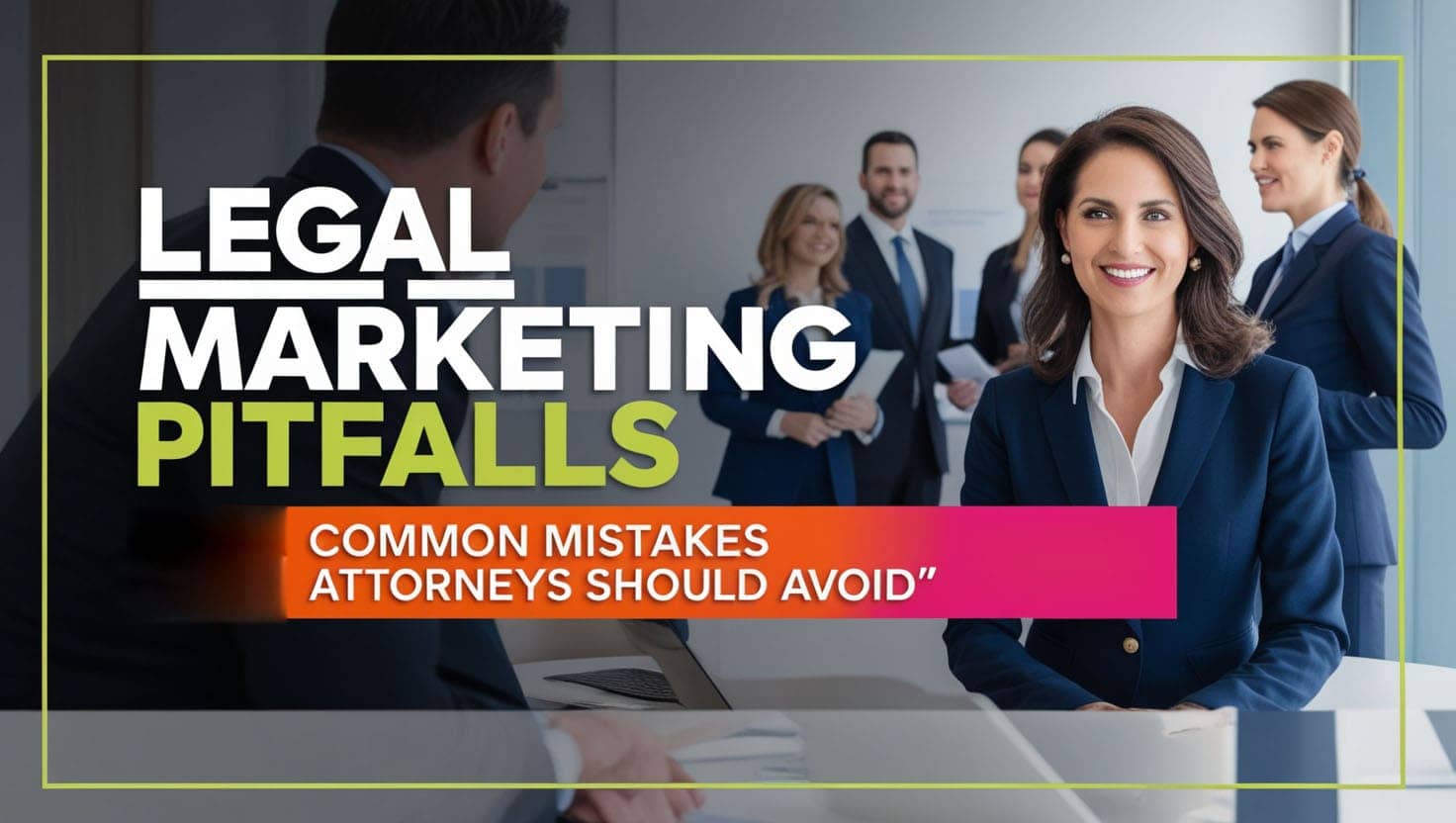
Successful marketing can make or break any law firm. While most lawyers know they need a strong marketing strategy, many continue to make the same mistakes, limiting their growth and costing them potential clients. Whether it’s not investing enough, focusing on the wrong channels, or failing to track key metrics, there’s always room to improve. Here’s a breakdown of the five biggest marketing mistakes lawyers can’t afford to make—and how to fix them.
Knowing Key Numbers: The Foundation of Marketing Success
When it comes to marketing, data is king. Yet many lawyers overlook this simple truth. All that’s really needed are two numbers: How much does it cost to acquire a client, and how much is that client worth?
Successful law firms have scaled their marketing efforts from minimal budgets to generating substantial monthly revenue by keeping track of these two key numbers. The proven strategy is to ensure that every dollar invested in marketing generates at least $3 in return. Whether starting out or trying to scale, knowing the cost per acquisition (CPA) and return on investment (ROI) allows for smart, strategic decisions.
If lawyers aren’t tracking the cost of getting clients, they’re just throwing marketing dollars into the void, hoping something sticks.
SEO: The Money Pit to Avoid
Too many lawyers are still pouring money into SEO (Search Engine Optimization), desperately hoping it will get them to that coveted number one search position. The problem? SEO is overcrowded, overpriced, and often delivers minimal returns.
Legal professionals need to understand that SEO is not a quick fix. Getting meaningful results could take years—if it happens at all. Investing tens of thousands of dollars in SEO efforts only to compete for visibility behind Google ads, local listings, and paid placements is often futile. Even achieving that eighth or ninth spot organically may yield little benefit, as very few people scroll past the paid results.
Rather than investing thousands in SEO, lawyers should consider redirecting that budget toward social media ads, Google ads, or something far simpler—collecting Google reviews. Social media offers targeted ads with immediate feedback on what works.
Marketing as an Investment, Not an Expense
One of the most common mistakes? Lawyers either don’t spend enough, or they view marketing costs as just that—costs. But effective marketing is an investment. A $10,000 spend that generates $30,000 isn’t a cost, it’s a return.
Most lawyers tend to underspend, afraid of wasting money. But here’s the reality: not spending enough is the bigger risk. A general rule of thumb is to spend the equivalent of one client’s worth on advertising per source, per month. For a client worth $5,000, that’s how much should be spent on marketing efforts for that month.
This mindset shift—from seeing marketing as a cost to seeing it as an investment—can make all the difference in a firm’s growth trajectory.
Building a Marketing Budget: A Strategic Approach
The process of determining a marketing budget isn’t complex—it’s just math. Here’s the breakdown:
- Determine the average value of a client: For example, each client brings in $5,000
- Set a goal for new client acquisitions: Aim for nine clients over three months
- Calculate potential revenue: Nine clients at $5,000 each equals $45,000 potential revenue
- Decide on marketing investment: Invest at least one-third of projected revenue—$15,000 across three months
- Follow through: Don’t cut corners or pivot too soon; marketing efforts need time to show results
If these numbers don’t cause some hesitation, the budget likely isn’t ambitious enough.
The Power of Google Reviews as a Marketing Tool
In today’s landscape, Google reviews have become one of the most critical assets for law firms. Collecting them is like planting seeds that will yield future clients. Every review helps build online reputation and, more importantly, trust.
The reality is that prospects searching for a lawyer won’t call if they don’t trust the firm. Many people make trust-based decisions solely on the number of positive reviews they see online. Between one firm with 50 reviews and another with 500, the choice is clear for most potential clients.
The Know, Like, and Trust (KLT) Factor
Beyond Google reviews, potential clients need to go through the psychological process of knowing, liking, and trusting a law firm (KLT). This is where personalization becomes crucial. Adding personal touches, like sharing pictures of firm life or team members on the website, can humanize the practice and make it more relatable.
The more someone feels they “know” a firm, the higher the chance they’ll trust it and choose it over the competition. Reviews reinforce this trust by showing that others have had positive experiences with the firm.
Handling Negative Reviews Professionally
No firm is immune to occasional negative reviews. The key lies in the response approach. Professional firms see negative reviews as opportunities to showcase their commitment to client satisfaction.
A well-crafted, neutral, and professional response can turn the narrative favorably. Leveraging AI tools like ChatGPT can help formulate effective responses that maintain professionalism while showing compassion. When handled correctly, negative reviews become opportunities to demonstrate transparency and client care.
Preparing for the Future: AI-Driven Search
As traditional SEO becomes less effective, new opportunities are emerging. AI-driven search engines like OpenAI’s anticipated “SearchGPT” could disrupt current search patterns. Law firms need to prepare for a future where people ask AI for lawyer recommendations rather than scrolling through search results.
Tracking Essential Metrics
Law firms often get distracted by vanity metrics like clicks and impressions. The focus should remain on two critical numbers: client acquisition cost and client value. These core metrics provide the foundation for confident, informed marketing decisions.
Effective legal marketing isn’t about random advertising—it’s about understanding numbers, building trust through reviews and personal connection, and maintaining flexibility as new trends emerge. By avoiding these common mistakes and focusing on proven methods, law firms can achieve faster, more sustainable growth in today’s competitive landscape.